Abstract
Advertising has significantly developed in cyberspace as the internet grows more popular. Online advertisements are recognized as an adept marketing strategy for their reach and cost-efficiency. Two popular types of online advertisements are web banners and pop-ups. This paper aims to determine consumers’ attitudes and reactions towards online web banners and pop-up internet advertisements. The positivism/incentivism method was used to provide an explanation and develop hypotheses to the secondary data gathered from existing studies and surveys on related topics, which includes two laboratory experiments with several participants. The main finding is that online advertisements should be properly placed to ensure the best results from advertising on the internet.
Introduction
Context
In the modern era, online advertising has been considered a key marketing practice among firms in their standard marketing strategy options (Silk et al. 2001). Marketers use the internet in delivering marketing messages to attract customers into buying products and services. Prominent online advertisements include pop-ups and online banners which are delivered by Ad servers such as Google, Double Click, Yahoo!, AOL and Adbrite.
According to eMarketer 2004,) around $9.6 billion was spent on online advertisements for the year 2004 and figures continued to increase by 2005 with an estimate of $12 billion in expenditure (Olsen, 2005). For marketers, advertising online is beneficial because messages can be published immediately without geographic or time restraints, promotional materials can be customized in terms of content and to which websites they are posted so that the target markets can be directly captured.
One form of online advertisement is the pop-up which appears whenever a user gains access to a website. Pop-ups direct users to another website where promotions are posted. They have been the cause of change in the visual field which led to a higher degree of visual stimulation (Diao and Sundar, 2004). The prominence of pop-ups has given rise to the pop-up blocker business. Pop-up blockers are responsible for hindering pop-ups from appearing on a user’s screen when opening a website. To counteract such a trend, pop-up advertisement developers have designed websites that force pop-ups to appear on users’ screens even if pop-up blockers are used. Such development led to the increased cost of pop-up advertisements (Olsen, 2004). A web banner is another form of online advertisement. Its purpose is similar to that of a pop-up but the difference is web banners are embedded in a given web page to attract traffic and link interested users to the advertiser’s website.
Apple Inc., a multinational IT company distributing consumer electronics, computer software, and personal computers will be the center of discussions in terms of examples relating to a company’s execution of marketing strategies and online banner implementations.
Theoretical Underpinning
This research will delve into the preference of internet users when encountering online advertisements in the form of web banners and pop-ups. Different studies from the secondary data gathered show different results according to the different variables considered. By recognizing and clarifying the data, this paper will integrate the information gathered from the previous studies to create a sound idea on web banners and pop-ups as online advertising instruments.
Management Problem
In launching new products or broadening consumer awareness of the brand or product, and management will have to decide what type of advertisement will be most effective in gaining a favorable response from consumers. A poorly constructed plan may well reflect on consumers’ choices in the long term. Choosing the right type of advertisement, however, will not guarantee a favorable response. Ad placements and frequency should also be considered. Internet users as consumers tend to be easily annoyed with inappropriate advertising at the wrong time, thus hindering the goal of producing brand recall and awareness among consumers.
Research Purpose
The effectiveness of online advertisements has been the subject of debate among many scholars. Extensive researches have concluded that pop-ups and web banners have a variety of reaction among internet users. Through experiments conducted by different scholars, it was found out that internet users have a strong and intense dislike for pop-ups which results in negative attitudes towards the website that was accessed and the brand owner. In online advertising, though pop-ups and web banners are considered two separate forms of advertisements, internet users can not consciously distinguish between the two. However, users tend to close pop-ups and just ignore web banners (Chan et al., 2004). With the continuous rise and popularity of pop-up blockers today, scholars question the effectiveness of online banners as marketing tools.
The purpose of this research is to determine consumers’ attitudes and reactions towards online web banners and pop-ups. This research will provide online advertisement users information to support effective online advertising.
Research Objectives
This paper aims to investigate the effectiveness of online web banners and pop-ups by determining the attitudes and opinions as well as the reactions of internet users towards seeing banner ads on web pages accessed or having pop-ups show when internet users enter websites. In achieving these objectives, it is essential to determine the factors that made internet users decide and conclude that web banners and pop-up ads, in general, are annoying or they contribute to the awareness of the brand. This paper will examine the positive and negative impacts on users in their encounters with pop-ups and online banners. This will be an analysis of whether internet advertising is a viable tool in raising brand awareness or it is just causing annoyance to the target markets.
The research is based on secondary data provided by previous studies conducted on the topics of the effects of online advertisements on internet users and the efficiency of pop-ups and web banners.
Literature Review
Academic studies and industry research on online advertising such as that of Dahlen et al. and Gallagher et al. (2001) are concentrated on observing the changes brought about by advertisements on brand recall and awareness as well as customers’ intention to purchase rather than actual purchase behaviors. These studies are usually executed via field surveys and/ or experiments using individual data.
Studies conducted by Sherman et al and Deighton et al (2001) are more detailed where they observed an experiment executed by a web advertising agency and an online merchant on the targeting of customers to increase the response rate and decrease the average cost-per-action.
Industry researches such as that of Briggs and Warren (2011) concluded that web banner advertisements have effects on internet users’ attitudes. They observed that the click-through method is a poor way of measuring the effectiveness of advertising response.
Multinominal logit model was used by Chatterjee et al. (1998) in their research to find out that immediate responses of consumers were being measured by click-through thus “the probability of clicking through on a given visit is unaffected by exposures on prior visits and the propensity to click follows a non-monotonic relationship with the number of exposures”.
Cochrane (2006) conducted a study on pop-ups where memory recall on advertisements was tested proving that inexperienced internet users have higher recall compared to the experienced ones. Also through the research, it was found out that experienced internet users use pop-up blockers compared to the inexperienced ones thus concluding that pop-ups stress inexperienced internet users while experienced users tend to ignore them or their tolerance for pop-ups is higher.
The study Chan et al. (2004) observed that internet users, in general, cannot consciously distinguish between a pop-up advertisement and a web banner. Their findings show that pop-up banners tend to give a negative effect on internet users thus the brand of the owner suffers. Since most users see pop-up ads and banner ads as one, the latter is affected by the users’ annoyances though at times they are ignored.
Previous studies have determined that several factors should be considered when deciding what kind of advertisement to place. The type of online advertisement used, the type of internet user who frequents the site, and their know-how of the internet are the main factors taken into account by the researchers of the previous studies. Furthermore, since it was observed that internet users cannot consciously distinguish web banners from pop-up advertisements while surfing the web, the frequency of encounters with internet users of each of the two types will affect the annoyance level of the user. Although there is a level of annoyance for each of the two types of online advertisements, they are still effective in promoting brand or product recall and awareness and are still the most popular types of online advertisements available to firms. With proper planning and strategy using these online advertisements, they may be powerful tools for advertising.
Proper analysis of the framework can lead to the effectiveness of the advertisement and may promote brand awareness; if such framework is not properly executed placement of online advertisements may lead to customer annoyance and may impact the brand negatively. In planning marketing strategies, managers must first consider studying available data regarding the market. For example, Apple Inc. caters to the class A and B markets with their products being more expensive than their competitors such as Dell and Sony Vio thus their target market is of premium class.
Gathering information on competitors’ prices, sales, and marketing activities are important to determine how the brand may position itself. The buying behavior of both Apple’s consumers is also of great significance. The marketing team should check B2B behavior, what small and medium enterprises need in terms of product specifications and pricing as well as large corporations.
On the consumer side, since the price is a great factor marketer need to determine strategies to further promote brand awareness and recall among consumers as well as highlighting Apple products’ key and unique selling points. Segmentation, targeting, and positioning of the brand play important roles in doing marketing activities. It is essential that when planning marketing activities whether be a below the line or above the line activity, marketers should keep in mind that the target markets will be catered to.
In online advertising, if Apple Inc. wishes to post online advertisements such as pop-ups and/ or web banners, internet users who are in line with the company’s criteria should be the ones exposed to the ads. Example Apple Inc. wishes to promote the latest Mac Book Air series, a thin and light notebook suitable for people on the go. Target markets should be professionals and travelers. If it wishes to buy online advertisements, it should strategically position its ads on travel and business websites. Pop-up banners may appear upon the access of travel and leisure websites such as the local country’s airline websites, lifestyle section of an online magazine, or web banners. It may appear on the business section of an online newspaper or can be placed on stock markets’ websites.
The importance of identifying target markets and their behaviors are essential in marketing products and services. It helps marketers focus on customers whose purchasing probability is high because the company’s products are of interest and need to the focused markets.
Research Methodology
This paper used the positivism and interpretivism methods in conducting the study. Positivism observers social behaviors and with sensory experiences, make logical conclusions from them. It contends that logic is the source of worthwhile information. Positivism may limit studies by not being sufficient in its observation of parts to construct the whole. For example, taking all separate parts into a whole concept might provide complexities in the interaction of the parts. It also limits the study by sometimes providing unreliable judgment instead of facts from the researcher.
Interpretivism observes the whole to conclude a phenomenon. This method seeks and collects data from different sources of one phenomenon to understand it as a whole. Its limitation lies in that it is not objective in the natural sciences. It is usually used along with the positivism method because the latter alone is not sufficient to understand a phenomenon in itself and the incentive method is not purely objective.
This study will be using both positivism and interpretivism to analyze the secondary data on web banners and pop-ups to draw information from different sources on different angles of the topic and create a whole idea of the effectiveness of web banners and pop-ups in promoting brand recall and awareness on consumers.
Data from existing studies and surveys with regards to internet users’ reactions towards online banners and pop-up advertisements will be analyzed as the basis of the study. Studies by Chan et al. (2004) and Cocharen (2006) were the basis of this research. The study of Chan et al. was conducted in a UK laboratory of Bunnyfoot University where thirty-six individuals participated. The subjects were tested in an eye-tracking system followed by answering questionnaires relating to their attitudes towards online advertisements and finally, the subjects went through in-depth interviews. On the other hand, Cocharen’s tested the memory recalls of participants with a single-blind design to eradicate biases as there was deception involved. Applying the method of t-test, the users’ experience with regards to their exposure to the internet was considered the independent variable while dependent variables were associated with the users’ memory recalls in terms of the product advertised in the advertisements, their usages of pop-up blockers, and if the users’ previous experiences with online advertisements were positive or negative. In the experiment, the participants were seventy undergraduate students of Irish descent from diverse socioeconomic and ethnic backgrounds but all spoke English as their first language. Participants’ ages ranged from eighteen to sixty years old and they were divided into two groups with regards to their experience with the internet (experienced and inexperienced group). The subjects were given questionnaires to answer with regards to the dependent variables in the study. Quantitative data from the two experiments were used to determine the impact of online banners and pop-up advertisements. Results can be found in the appendices.
Presentation, Analysis, and Interpretation of Data
According to Wakolbinger et al (2009), customers have the prerogative to check such advertisements or not, thus not all online advertisements are effective. Pop-up advertisements are claimed to be more effective than web ads because they can successfully capture the attention of internet users compared to the latter (Cocherane 2004). Pop-ups have higher click rates compared to web banners. Morissey (2003) cited that “According to an Advertising.com analysis, pop-up advertisements generate a click-through 13 times that of the standard 468 x 60 pixels banner”.
However, “some researchers estimate that they garner three to six times greater click-through rates than standard banners or display ads on the Web” (Olsen, 2002). Interestingly according to Alexa.com, as of January 2006, the top five posts popular websites in the globe (Yahoo!, MSN, Google, Yahoo! Japan, and Baidu.com) do not use and contain pop-up advertisements (2006). Research studies on the effectiveness of online banners especially pop-up ads have contradictory conclusions.
The continuous increase of spending on online advertisements may indicate the increase of pop-up banners and web ads on the internet. Once this situation occurs, internet users will be heavily exposed to more pop-up advertisements and banner ads despite their resistance them. Online advertisements will be the subject of irritation and annoyance among internet users thus affecting both the web page host and the brand. Several scholars concluded that they give off negative effect describing them as irritating, (McCoy et al., 2004; Edwards et al., 2002), annoying (Kane, 2003), distracting (McCoy et al., 2004), and producing negative attitudes (Chan et al., 2004; Safran, 2001; Previte & Forrest, 1998).
But this is not always the case with pop-up advertisements. It seems that when the brand or product’s pop-up advertisement is placed on a related site to the brand, internet users tend not to mind them. If, however, they inappropriately pop up on unsuspecting users, they tend to produce a negative response.
Experienced and Inexperienced Users
The World Wide Web can be stressful for new internet users compared to the experienced ones because the latter have already developed skills in ignoring pop-ups over time through the discovery of blockers while inexperienced ones, especially the older users, may need to develop such skills and experiences due to sporadic exposure towards the internet. The internet may not be a welcoming environment for new and inexperienced internet users thus the scope of online banners is reduced to the experienced ones. Scholars believe that the removal of online advertisements will promote the increase of internet accessibility and amiableness to everyone since pop-ups are considered cognitively damaging by McCoy et al. (2004) and also psychologically damaging (Benitez, 2002; Chan et al., 2004; Edwards et al., 2002). In other words, they are unwelcome to new internet users.
The studies of Chan et al. (2004) in the U.K, with thirty-six individuals who underwent tests, answered questionnaires on their attitudes towards internet advertising, and who went through in-depth interviews, resulted in the conclusion that pop-ups and web banners give a negative effect on internet users. According to the study, the majority of the subjects felt strong and intense dislikes towards online advertisements namely pop-ups which resulted in the individuals’ unpleasant attitudes towards the website which conducted the ads and the brand owner.
“50% of advertisements were closed before the advertisement finished loading. 35% of pop-up advertisements were ignored completely. The average time from a pop-up advertisement frame appearing and the clicking of the close button was 2.5 seconds. The survey found that as many as 9 out of 10 users who clicked on a popular popup advertisement were just trying to get rid of them and clicked through by accident “because the close button was so difficult to find” (Chan et al. 2004).
We note, however, that the experiments conducted by Chan et al. (2004) were conducted in a laboratory outside the leisure of the participants, which would have been more suitable for the experiments.
Tests conducted by Safran (2001) show that only 6% of the respondents were alright with online advertisements intrusion such as pop-ups while 72% of the survey thinks that such ads were appropriate. This contradicts heavily with Chan et al.’s (2004) conclusion.
The bombarding of pop-ups on internet users’ computer screens had led to the negative attitudes and feelings of users towards pop-up advertisements. According to Safran (2001), pop-up advertisements can be useful as long as they are limited to approximately 3 ads per hour shown. The problem here is that advertisers overwhelm users with pop-up ads.
In a study conducted by Kane (2003) on the impact of online advertisements such as pop-up ads and web banners, if they were annoying or useful to brand awareness, 78% of the participants said pop-ups were very annoying while 49% were annoyed with web banners. The same study also concluded that though pop-up ads hurt users, the click-through rate of pop-ups compared to web banners is twice as much. This coincides with Safran’s (2001) tests.
Between experienced and inexperienced internet users, it has been found out that the latter tends to have a positive outlook on online advertisements as compared to those who have been oriented by the internet for four years or so. Irritation and annoyance among internet users come from online advertisers’ persistence to force pop-ups and online banners on the users even if the latter wish to get rid of them from their surfing experience. Such forceful acts make users feel imposed to view the ads or install software to block pop-ups (Benitez, 2002). “Users become frustrated with advertisements like pop-ups which obstruct information and are an unwanted interruption” (Chan et al., 2004). These sorts of advertisements are relentless without cause but to be noticed, which is not usually favored by consumers.
Based on the secondary sources, it has been found out that experienced internet users tend to be more negative towards online advertisements compared to inexperienced ones. Experience internet users were also the ones using pop-up blocker software in their surfing experiences while the inexperienced group did not install pop-up blockers onto their computer or some were unsure of the software. Though a portion of the participants think online banners are useful in doing brand recall and awareness, the majority of the users find online advertisements annoying. In their memory recall, studies show that both experienced and inexperienced groups retain some information from the advertisements but they could not recall the details of the advertisements thus online banners are deemed useless if detailed information is targeted to be spread to the public.
A study by Edwards et. al. (2002) indicated that when advertisements are forced upon internet surfers to view the ad, a sense of intrusiveness and interruption occurs as a reaction. Such occurrences result in the users’ retreat away from the basis of irritation and annoyance or sometimes called “ad avoidance” by Edwards et. al. When internet users become irritated and annoyed with online advertisements such as pop-ups and web banners, they tend to avoid them thus they will no longer visit the same web page or will have negative reactions towards the brand. To limit the internet users’ perception of intrusiveness, online advertisers must target consumers when their cognitive effort is low, the advertising materials must be relevant to the information the user is browsing and most significantly viewers must be given value and importance (Edwards et. al. 2002).
Unrelenting online advertisements do not do the brand any favors but instigate negative reactions from internet users. Firms must be mindful not to cross inappropriateness in constructing their online advertisements.
Summary, Conclusion, and Recommendation
In conclusion on pop-up advertisements, they are not effective if they are poorly thought out. In some cases, if they are too relentless, they produce the opposite of the desired effect.
For a company to implement online banners into its marketing plan since the internet is a good viable place for advertisements, marketers and advertisers alike must strategically plan the placement of such advertisements by being fully aware of the market, understanding the company’s target markets and their behaviors as well as their attitudes. Online advertisements should be posted on web pages where the target markets have interests or where the website’s audience has the same characteristic and needs as the company’s prospective clients.
In conclusion, online banners can cost firms so much but in terms of return on investment such is not feasible. Online advertisements can damage brand images by irritating internet users who are probable customers. As internet users grow more experience in using the World Wide Web, they eventually learn to ignore the existence of online advertisements thus the latter becomes useless. Also the probability of pop-ups being blocked or closed before the observer sees the information is high (Alexa, 2006).
Online advertisements if not properly and strategically planned out may be a complete waste of time, effort, and money especially with them being unpopular among internet users. Though they may promote brand recall and awareness among internet users, the majority think they are annoying and should be eradicated from the internet but their existence promotes good revenue in the internet business and with the “go paper-less age” the importance of online advertisements and the internet as a medium of sending information are of great importance.
The negative impact brought about by online advertisements can be traced back to the initial popularity of the dot-com era where advertisers continuously bombarded internet users with online ads which tend to disrupt the surfing experiences of users. The rise in popularity of pop-up blocker software followed with users’ resistance to receive online advertisements during their time on the web.
Appendices
Appendix A: Tables (Cocharen, 2006)
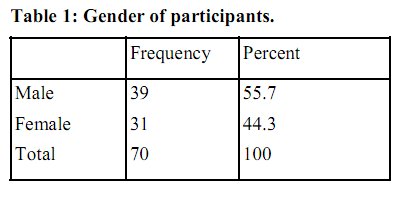
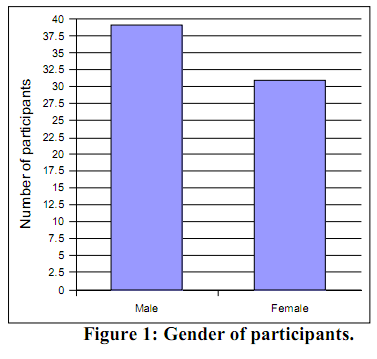

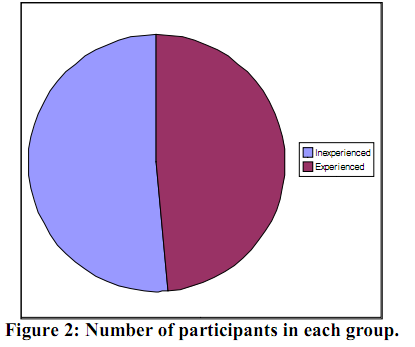
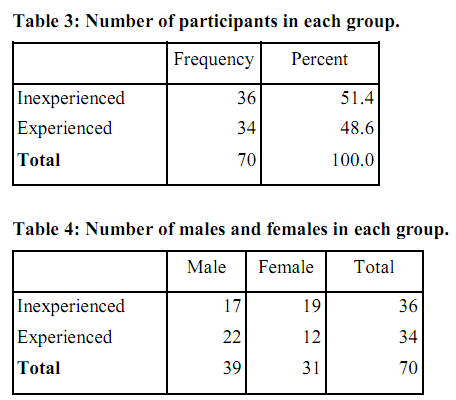
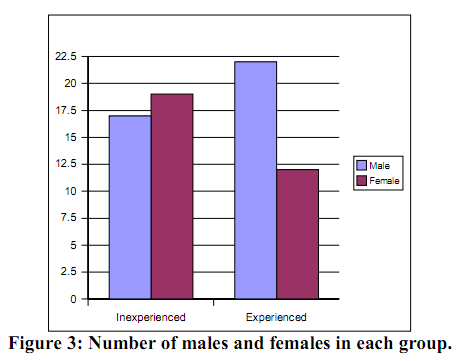
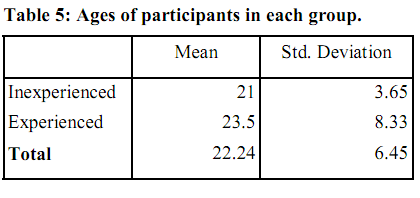
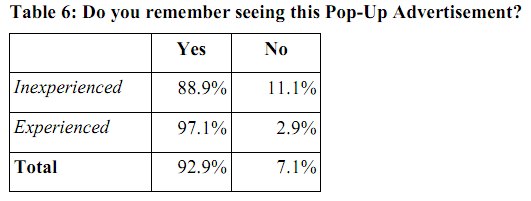
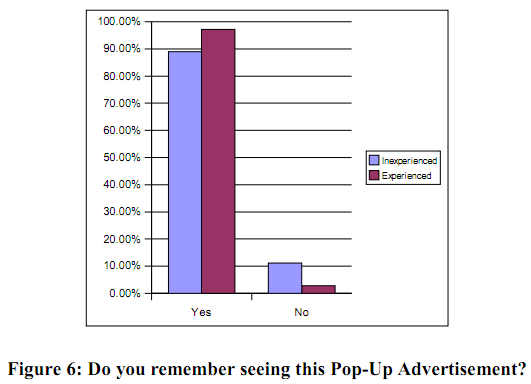

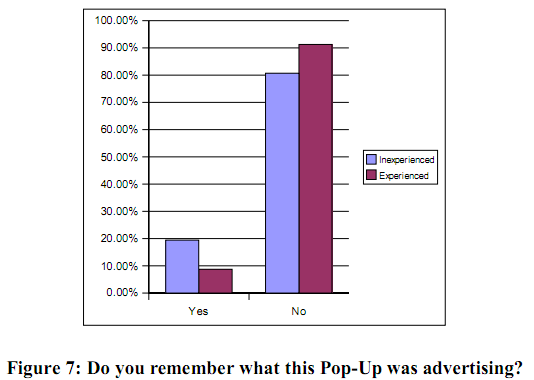
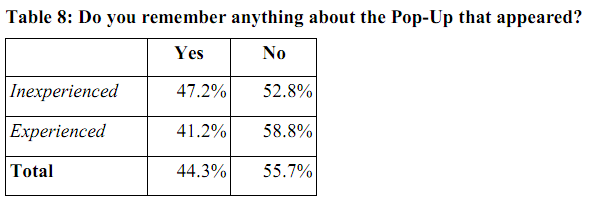
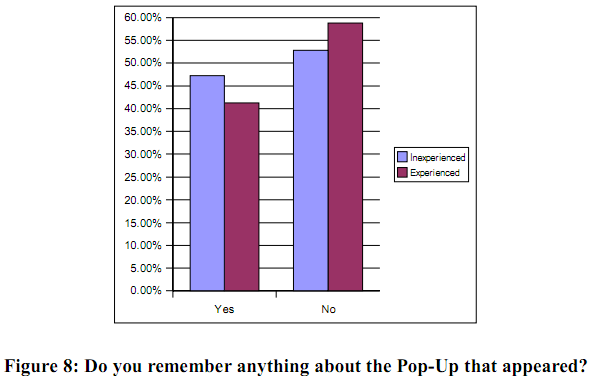


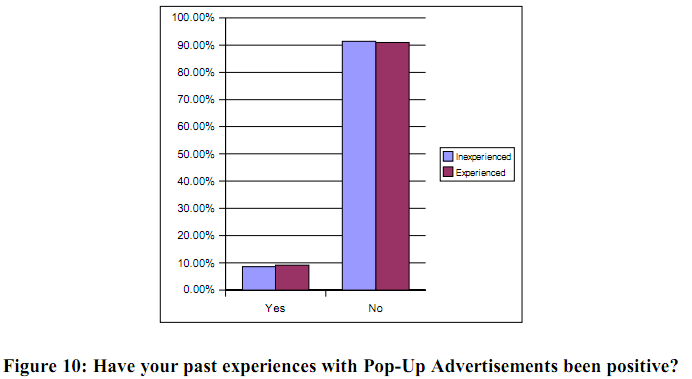
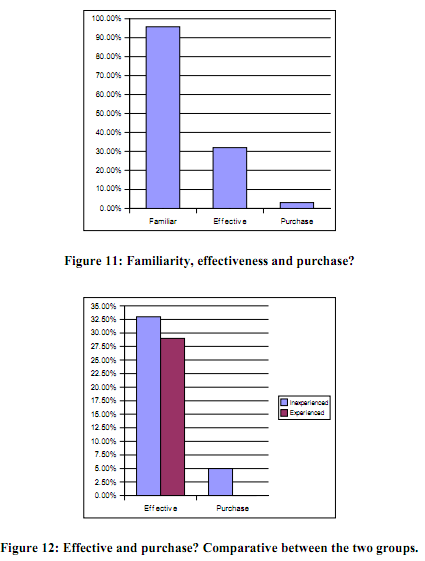
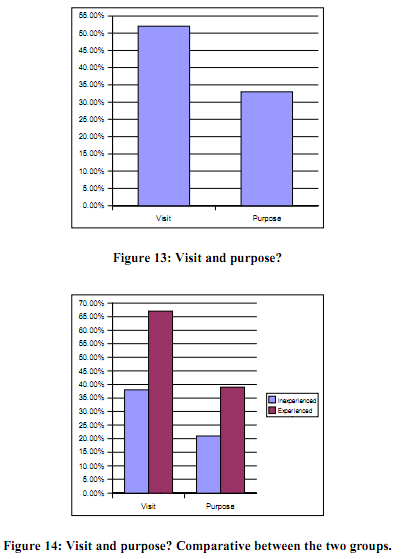
Appendix B: Questionnaire (Cocharen, 2006)
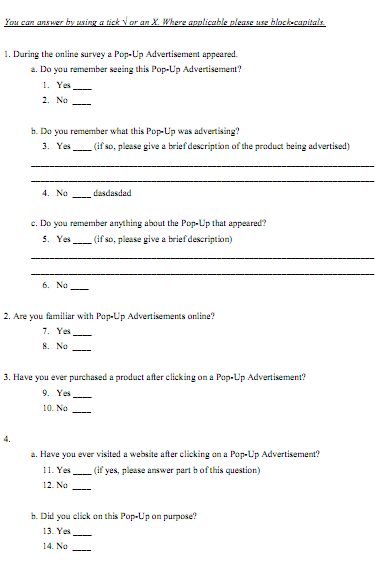
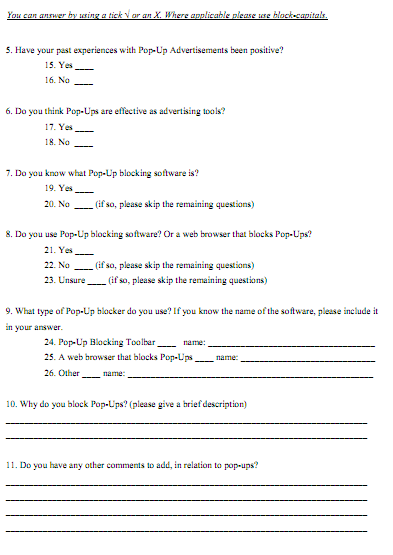
Appendix C: Online Survey Questions (Cocharen, 2006)
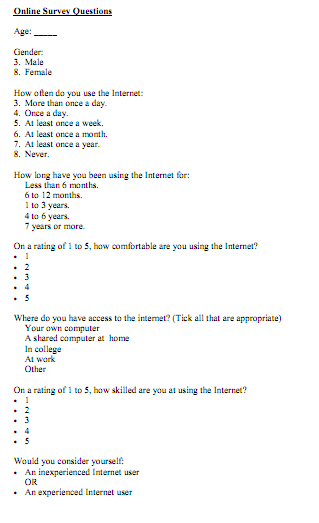
Reference List
Alexa., 2006. Global Top 500 Websites. Web.
Benitez, T., 2002. Pop-ups fizzle in a flash. Incentive, 76 (11), p.14.
Briggs, R., 2001, Abolish Clickthrough now! Web.
Chan, A et. al., 2004. The efficacy of pop-ups and the effect on brands. Web.
Chatterjee, P. et. al., 1998. Modeling the clickstream: Implications for web-based advertising efforts. USA, Owen Graduate School of Management, Vanderbilt University.
Cochrane, S. 2006. The Memory Recall of Pop-Up Advertisements Amongst Experienced Internet Users. Bachelor. Dun Laoghaire Institute of Art, Design and Technology.
Dahlen, M., 2001. Banner advertisements through a new lens. Journal of Advertising Research, 41 (4), pp. 23-30.
Diao, F., and Sundar, S., 2004. Orienting Response and Memory for Web Advertisements. Communication Research, 31 (5), pp. 537-567.
Deighton, J. et. al., 1994. The effects of advertising on brand switching and repeat purchasing. Journal of Marketing Research, 31 (2), pp. 28-43.
Edwards, S. et. al. 2002. Forced exposure and psychological reactance: Antecedents and consequences of the perceived intrusiveness of pop-up ads, Journal of Advertising, 31 (3), pp. 83-94.
EMarketer, 2004. Industry stats and data by eMarketer. Web.
Gallagher, K., 2001. The medium is not the message: Advertising effectiveness and content evaluation in print and on the Web, Journal of Advertising Research, 41 (4), pp. 57-70.
Kane, M., 2003. Pop-ups are annoying, but effective. Web.
McCoy, S. et. al., 2004. A Study of the Effects of Online Advertising: A Focus on Pop-Up and In-Line Ads, Proceedings of the Third Annual Workshop on HCI Research in MIS, Washington, D.C., 2004. Web.
Morissey, B., 2003. Pop-Ups Work. Web.
Olsen, S., 2002. Taking the air out of pop-ups. Web.
Olsen, S., 2004. Revenge of the pop-ups. Web.
Olsen, S., 2005. Web ad sales hit another record high. Web.
Previte, J., and Forrest, E., 1998. Internet Advertising: An Assessment of Consumer Attitudes to Advertising On the Internet. Web.
Safran, D., 2001. Beyond The Click: Ad Reaction Study. Web.
Silk, A. et. al., 2001. The emerging position of the Internet as an advertising medium, Netnomics, 3, pp. 129-148.
Sherman, L. et. al., 2001. Banner advertising: Measuring effectiveness and optimizing placement, Journal of Interactive Marketing, 15 (2), pp.60-64.
Wakolbinger, L. et. al., 2009. The Effectiveness of combining Online and Print Advertisement. Advertisind Research, 49 (3), pp. 360–372.
Warren, S., 2001. Winners and Losers, Wall Street Journal, 2001 Issue.